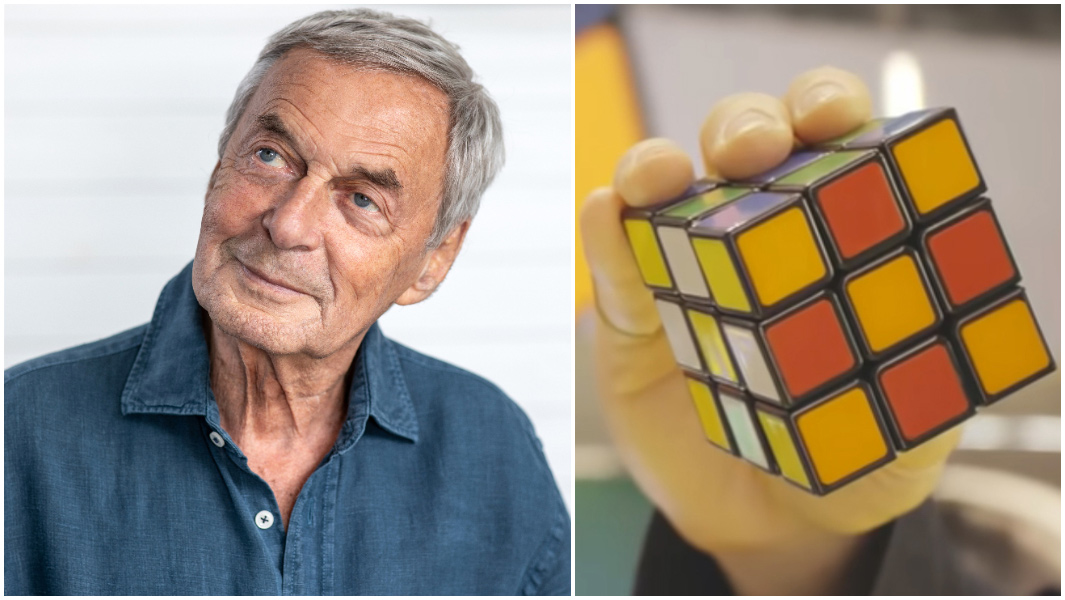An interview with Rubik's Cube creator Ernő Rubik

Ernő Rubik is a Hungarian inventor who, as his name suggests, is the brains behind the much loved Rubik's Cube.
He created what was then known as the "Magic Cube" in 1974 for his students when he was a professor of design in Budapest.
A head-scratching puzzle loved by people of all ages, this brightly coloured cube has inspired a whole community of Cubers, including speedcubers and of course, multiple Guinness World Records title holders.
We spoke to Ernő Rubik about the history of the Rubik's Cube, how he feels about the widespread popularity it has garnered, and its future.
Do you still have the prototype of your first cube?
One of the first working prototypes, made of wood and without colours, is now part of the traveling science exhibition called Beyond Rubik’s Cube. We co-created the exhibition with Liberty Science Center in the USA and Google’s Creative Labs was our lead partner. It opened in New Jersey in 2014 and has been travelling the world ever since.
What was the journey like from academic prototype to commercial puzzle?
Back in the 1970s, Hungary was under State-Socialist rule and five-year economic planning – not exactly ideal for a completely new product in the obscure category of puzzles. It made it into production three years later, in 1977.
How did it feel to create a toy so universally loved that it transcended geopolitical divides?
True to its original name, that really is the magic of the Cube. It speaks to the noblest, universally shared human characteristics: curiosity, playfulness, problem-solving and intelligence. No matter your social background, colour of your skin, age or gender: the Cube encapsulates the puzzle of us all.
What were your favourite toys/puzzles when growing up?
While enjoying the challenge of classics like the 15 Puzzle or even chess riddles, I was most involved in creating my own little games and tasks. These were mainly solitary types, where you are faced with the challenge itself, not a competitor or opponent.
Were you aware of the mathematical complexity of the Cube from the start? Or has it taken others to reveal its intricacies?
Well, it was clear from the get-go that the Cube is all about vast complexities and astronomic numbers. Obviously, I wasn’t equipped with the knowledge to fully understand its significance for group theory, combinatorics or algorithms. However, professional mathematicians had a great part in making the Cube the international success it has become by their early enthusiasm – that fortunately hasn’t wavered since.
How has the Rubik’s Cube's popularity changed your life?
The Cube has become world-famous and some of its fame has also covered me with some stardust. But I have always been careful not to be too near the limelight…
What is your take on how popular speedcubing has become as an activity?
Speedcubing is a magical glue that holds a global cubing community together. Friendships across continents and even marriages have been made by a shared interest in the Cube. As a sport, speedcubing is robustly gaining relevance thanks to the enthusiasm of a wonderful grassroots organisation, the World Cube Association and more recently under the professional promotion of Red Bull.
Where’s the most extreme location you’ve seen someone trying to solve a Rubik’s Cube?
Everywhere, really: under water, in deserts, in space, or jumping down from dizzying heights – with or without a parachute.
Do you have a personal best time for solving the 3x3x3 Cube?
I have never measured my time – partly due to lack of competitive interest and partly because I am so far behind the professionals that it doesn’t need a timer to establish the gap.
How do you feel about robots now solving the Cube in under a second?
This phenomenon is obviously more about robotics than cubing and it is mind-blowing to see how this research area is developing at the speed of light. At the same time, there’s clearly a deep connection between IT in general and the Cube as many R&D achievements are showcased by using the Cube. Most recently, an AI robotic hand was introduced solving the cube the way we humans would do.
Ernő Rubik explores his experiences and thoughts on creativity and puzzles in Cubed: The Puzzle of Us All, which was first published by W&N Hardback on 15 Sep 2020. He also appears in the upcoming edition of Guinness World Records 2022 (out 14 September 2021), along with several of our amazing speedcubing record holders.



